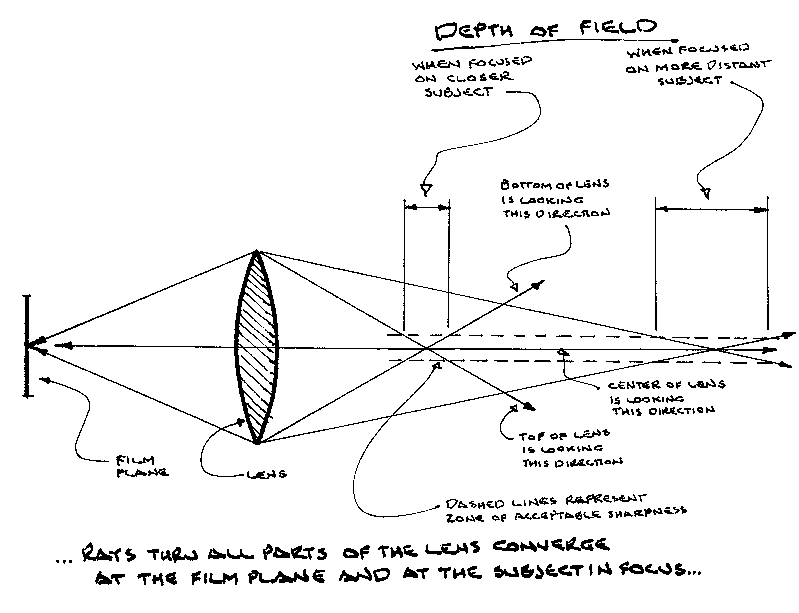|
||
As you stop down, this difference gets smaller and smaller as the aperture constricts toward a small point in the center of the lens. This is why it's the ABSOLUTE aperture, the diameter of the opening, rather than the RELATIVE aperture or f/stop, that determines DOF... longer lenses having correspondingly shallower DOF for a given F/stop... and also why DOF is shallower at closer distances. The sketch below attempts to illustrate this effect and why it happens. I've shown the difference between a nearer and a farther object, rather than between a larger and a smaller aperture, mainly because this gave me more room for notes on the sketch.... but the thing that determines the depth of field is the angle between the "highest" and "lowest" lines of sight through the lens, and I think you can see from the sketch how a smaller lens diameter would affect that. Pinhole 'lenses' have essentially no diameter; therefore the "upper" and "lower" rays in the sketch do not exist, only the center ray, and so their Depth of Field is infinite. 
This is not a technically perfect description; it does not, for instance, explain why depth of field is greater behind the subject than in front of it.... but I think dealing with that sort of detail would complicate it more than it's really worth. If you'd like to discuss that sort of thing, you can email me at rick.oleson@gmail.com. |
||
|
|
||
|
|
||
|
|
||
|
|
||
|
|
||
|
|
||
|
|
||
|
